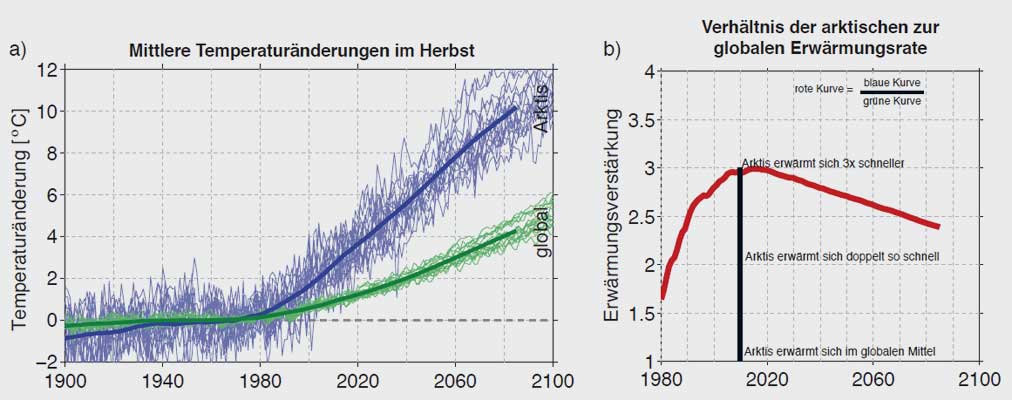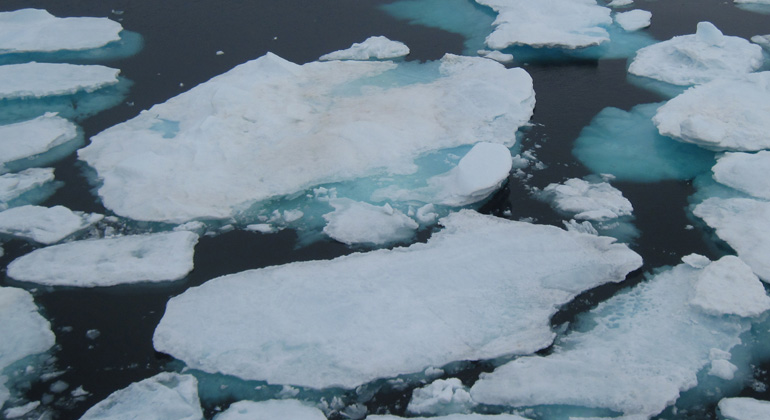Seasonality of Sea Ice Enhances Climate Warming in the Arctic
The sea ice cover of the Arctic Ocean shrinks rapidly with most ice loss observed during the summer months. Largest changes are expected to happen already within the next decade.
A new study under participation of the GEOMAR Helmholtz Centre for Ocean Research Kiel recently published in the international peer-reviewed journal Scientific Reports shows that this sea ice cover becomes increasingly seasonal. As the authors state the strongest changes in the Arctic can be expected to occur in the coming decade.
Last autumn and winter several stations in the Arctic noted the highest temperatures on record with anomalies of up to 16˚C on some days. The constantly shrinking sea ice cover, which reaches its minimum in the Northern Hemisphere in September, plays a big role in setting up the Arctic for such records. The retreat enables warming of the surface waters during summer thus delaying freeze up in autumn, which in turn shortens the growing season and leaves the ice thinner and more vulnerable to melt in the next summer.
Two scientists from The Johns Hopkins University in Baltimore, USA and the GEOMAR Helmholtz for Ocean Research Kiel used observational data and model simulations to show that the strongest change in the polar seas of the Northern Hemisphere happens now and in the next decade—and not later in the second half of the 21st century for which climate models project an ice-free ocean in summers.
“Observations show the Arctic is changing over a few decades from a year-round sea ice cover to an ocean that is largely ice-free in summer. For the Earth system, that’s a very rapid pace”, explains Prof. Thomas Haine, first author of the study, which just was published in the Journal Scientific Reports. “The Arctic sea ice cover has now reached the same degree of seasonality as in the Antarctic, which is known to have been seasonal as long as observations exist.”
In order to unambiguously compare Arctic and Antarctic sea ice, the two authors introduced a seasonality index. They compute the index for the 20th and 21st century using reconstructions and satellite observations of sea ice coverage for both hemispheres as well as results of an internationally coordinated modeling project (CMIP – Coupled Model Intercomparison Project) to project the future development of sea ice seasonality.
“In our study we show that the observed faster warming of the Arctic compare to the global mean – known as “Arctic Amplification” – varies in time and can be expected to decline slowly over the next decades. Further, the current transition of the Arctic sea ice toward a seasonal regime results in a peak in Arctic Amplification. This means the warming rate (not the warming itself) in the Arctic will slowly decrease in the future”, says Dr. Torge Martin, co-author of the study. “We thus anticipate that we currently and over the next decade witness the most extreme changes in the marine Arctic under anthropogenic climate change – long before the Arctic is projected to be ice-free in summer.” The transition towards a new Arctic is happening now summarize the two authors.
Original Article









